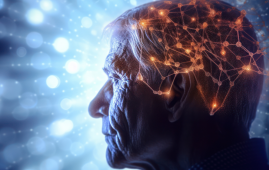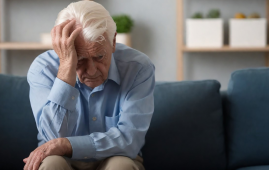

According to new research from the University of Pittsburgh published in the journal Physical Therapy, patients who seek physical therapy or chiropractic care first have better outcomes and shorter bouts of acute care for low back pain.
The findings reveal that the first point of entry into the health care system is associated with use and total cost of care in the following year for patients with acute bouts of low back pain. Nonpharmacologic and nonsurgical treatments are prioritized in clinical practice guidelines, however adherence to these standards has been low in the United States. Patients are frequently offered opioid pain medications or referred to specialists for procedures that do not address the underlying reasons of their pain, such as surgery, imaging, or steroid injections.
“Back and neck pain now account for the largest portion of health care spending in the U.S., followed closely by other musculoskeletal conditions,” said lead author Christopher Bise, Ph.D., UPMC physical therapist and assistant professor at Pitt’s School of Health and Rehabilitation Sciences. “Much of that spending does little to contribute to overall patient wellness.”
Bise and his colleagues discovered significant disparities in health care consumption based on where patients initially sought therapy for acute back pain relief by looking through over 30,000 patient records, largely from Pennsylvania and gathered between 2015 and 2018.
People who sought speciality care first (rheumatology, physiatry, or pain management) were in pain nearly twice as long as those who sought emergency care, chiropractic care, or physical therapy first. When total expenditures were compared, individuals who sought care through the ED or surgery paid nearly twice as much as those who sought care through chiropractic care or physical therapy.
Patients who sought care in the ED were also more likely to undergo expensive scans and injections. Furthermore, more than half of ED patients filled opioid pain medication prescriptions, compared to only 11% of persons who sought chiropractic care and physical therapy first.
Opioid prescriptions for low back pain have traditionally been a primary cause of the opioid crisis, according to the National Institutes of Health.
“Opioids and injections are, at best, Band-Aids for acute episodes of low back pain,” Bise said. “We need to flip the model on its head, prioritizing holistic wellness instead of simply treating the pain.”
Recognizing the need for a more collaborative approach to care, UPMC established the Program for Spine Health in 2019. Patients in the program get access to a health coach, dietitian, and pain psychologist in addition to physicians and physical therapists. Patients with the most severe illnesses and comorbidities are managed without the need of surgery, injections, or painkillers.
“Often, patients with low back pain end up spinning in the system, going from one specialist to another,” said Christopher Standaert, M.D., who directs the Program for Spine Health and who was not involved in the study. “Their care costs a tremendous amount of money, but they’re not getting any better.”
These findings show that new forms of spine care could benefit many people who suffer from low back pain.
“How do we get patients to the provider who can end the episode more quickly?” Bise asked. “Why aren’t physical therapists the primary musculoskeletal provider? Why aren’t we embedded in emergency departments? There are scattered models, but it hasn’t taken hold widely.”
more recommended stories
 Brain Chemistry & Political Attitudes: Neural Switch Theory
Brain Chemistry & Political Attitudes: Neural Switch TheoryIn summary, a recent study uses.
 Immunosuppression Driver Found in Glioblastoma
Immunosuppression Driver Found in GlioblastomaFilippo Veglia, Ph.D., an assistant professor.
 Early Brain Development: Gene Control Atlas Unveiled
Early Brain Development: Gene Control Atlas UnveiledAn atlas of the brain’s early.
 PLS Riskier in ABO Mismatched Lung Transplants
PLS Riskier in ABO Mismatched Lung TransplantsPassenger lymphocyte syndrome (PLS) is a.
 Lysosomal Function in Parkinson’s Disease Risk
Lysosomal Function in Parkinson’s Disease RiskThe genetic traits that affect the.
 Omega-6 Fatty Acid Role in Bipolar Disorder
Omega-6 Fatty Acid Role in Bipolar DisorderHigher concentrations of arachidonic acid, an.
 Transplant Drug Shows Promise in Slowing Alzheimer’s in Seizure Patients
Transplant Drug Shows Promise in Slowing Alzheimer’s in Seizure PatientsProtein imbalances, which heighten the excitability.
 Fentanyl Inhalation: Brain Damage Risks
Fentanyl Inhalation: Brain Damage RisksAfter treating a middle-aged man who.
 Enhanced Immune Response in New COVID-19 Vaccines
Enhanced Immune Response in New COVID-19 VaccinesAn improved vaccination offers an enhanced.
 Bioresorbable Wireless Sensor for Early Stomach Leakage Detection
Bioresorbable Wireless Sensor for Early Stomach Leakage DetectionIn a recent publication in Scientific.

Leave a Comment